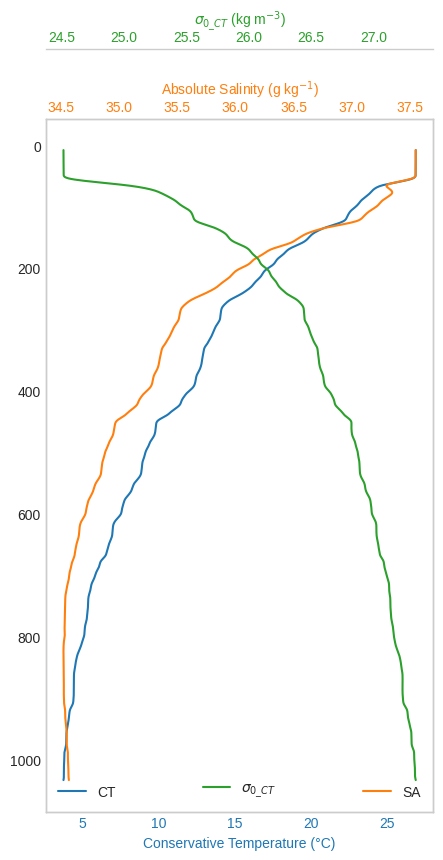Advanced examples#
Reading a SeaBird CTD .cnv data file#
SeaBird CTD instruments are widely used in Oceanography. Reading SeaBird CTD .cnv data files is therefore a common task. The files are text based and one could write code from scratch to read and parse them, but then lots of people would be reinventing the wheel, imperfectly.
We will use the existing ctd open-source Python package, https://pyoceans.github.io/python-ctd/. We’ll go through a notebook found on that site that demonstrates its use; I copied the notebook to notebooks/ctd-quick_intro.ipynb. It can be run by installing the ctd package in your conda environment. If at the terminal, you’d do this, where my_conda_env is the name of your conda environment:
conda activate my_conda_env
conda install -c conda-forge ctd
Here’s a depth profile image created by the ctd example notebook:

Note
It’s not uncommon for different people or groups to create open-source packages with overlapping capabilities. There is at least one other package that reads SeaBird cnv files: the seabird package, https://seabird.readthedocs.io. Often in these cases, each package may have some features that the other one doesn’t.
